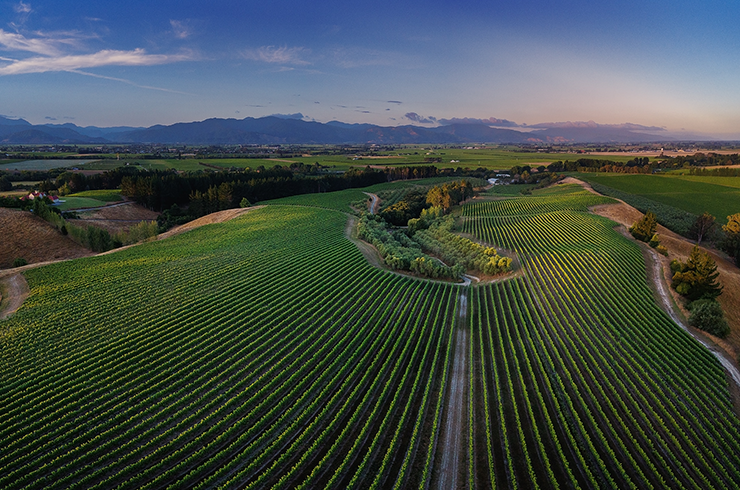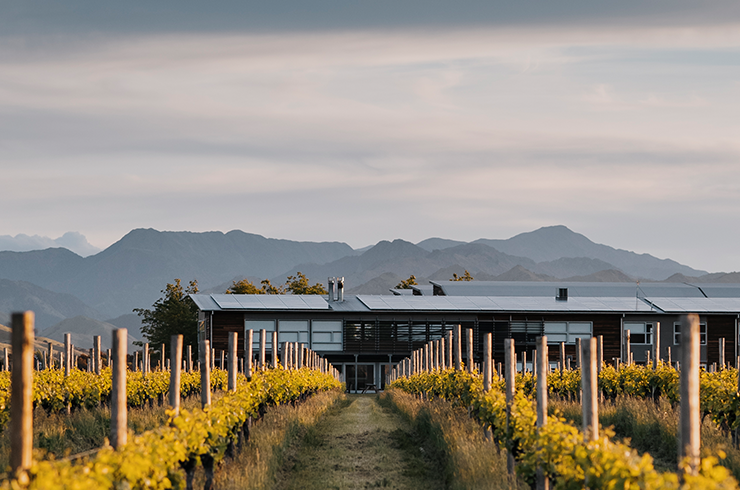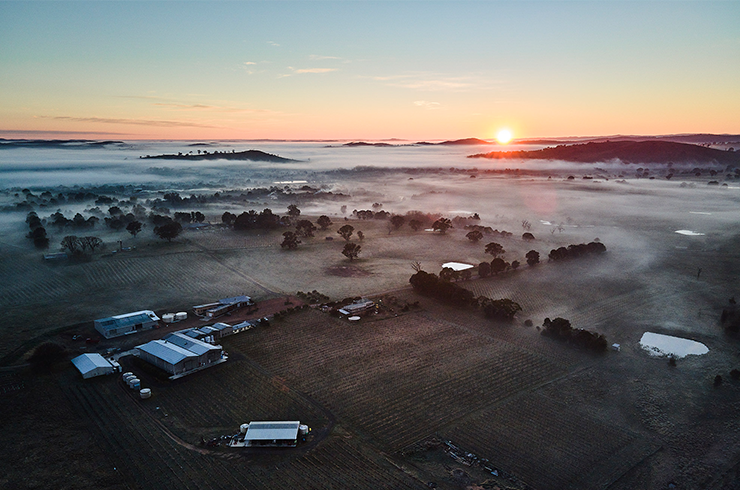James Halliday
On average, how many wines do you taste per day? 70 to 80, six days a week at the height of activity between January and March, otherwise every day I don’t have another commitment taking me away from the tasting room at Coldstream Hills.
What’s your process for tasting the thousands of wines submitted for the annual Halliday Wine Companion guide? I start at 7am, with all the wines already set up on the table by the irreplaceable Beth Anthony, including soda water, hard cheese and green olives on their stones. She will have done this the previous day as I come towards the conclusion of that day’s tasting. The white wines are set up along one side of the table, red wines on the other. There is sufficient room for 24 wines in each line. The wines are arranged in a predetermined order from light-bodied/unwooded through to full-bodied. Notwithstanding this, I move around the table from red to white and back again on the basis that white wines strip out the accumulation of tannins from the red wines, and the red wines strip out the acid build up from the whites. Traditionally, there was a rough 50/50 split between white and red, but these days it is 75/25 red to white (or even fewer whites). Coming to the precise mechanics of creating a tasting note, I carefully look at the colour of the wine (particularly if it’s red) first up, then I assess the bouquet, and then I taste the wine for the first time. I next repeat that exercise, writing the note as I do. Then, if I am satisfied that I understand the wine, I’ll have one final taste and immediately thereafter give the points for it. Tasting is all about concentration, and the mind gets tired before the palate or the nose.
Jane Faulkner
What’s the best part of being a wine reviewer? The diversity of wines you taste and discovering a few new producers. I’ve been a wine writer for many years, so it’s a joy when I come across a winery I haven’t tried before.
And what’s the worst? Washing glasses, cleaning rubbish, the courier turning up 10 times a day and it all feeling a bit like Groundhog Day. When I submitted that last tasting note, I spent the day cleaning, and I’ve never enjoyed cleaning so much in my life.
Tell us about your approach to tasting all those wines. This year, I tasted around 1700 wines, but it felt like 3000. Paula, James Halliday’s assistant, allocates the wines alphabetically, dividing the bottles from each letter among the reviewers, so it’s random – we don’t own particular regions or producers. There’s a six-week period that’s incredibly intense, and unlike judging at a wine show, there are no stewards to wash glassware and get rid of boxes – a glass washer is on my wishlist for Christmas! Riedel was generous in donating glassware and that has made a huge difference, as it means I can line-up those 24 glasses and go. I don’t really change from the black tracksuit pants and t-shirt that’s my outfit because then it doesn't matter if I spill anything on me. I start by checking what I wrote the day previous and then get into the tasting. I try to taste about 100 wines a day, but some days my body won’t let me, and because I want to do the wines justice, on those days, I pull back. Some wines are intriguing, too, so I want to return to them and see how they’re developing.
Ned Goodwin
What’s the most challenging part of being a reviewer? Firstly, coming up with new adjectives to essentially express the same thing, while avoiding – at least ostensibly – repetition. Secondly, maintaining one’s fitness and sustaining the level of gravitas and poise required of a father in front of one’s family – despite fatigue and often, admittedly, excess.
Do you take note of the great bottles so that you can return to them? Notes are inherent to the process, so yes. But I tend to push the better bottles aside to return to them after the drudgery.
How do you get through all those wines? I wake, have breakfast, exercise and go to the tasting room by 10am. I try to taste 50 to 80 wines daily, although given the creative semantics required and fatigue that sets in, the figure is closer to the former rather than the latter. I endeavour to do this six days a week, but the wines arrive in dribs and drabs at times, meaning I can clear my storage area out so that the next day there may be a deluge of deliveries!
Tyson Stelzer
How does tasting sparkling wine differ to still? There are so many more variables in the production of sparkling wine that you need the extra time to consider them properly. I approach the task with some stylistic segmentation, for example, tasting all the prosecco and then all the traditional method wines. I also try to taste the full portfolio of each producer in one go to get a feel for house style and any changes in philosophy from year to year. I’ll taste a particularly good wine again later in the day, and perhaps the following day, too, so I might only get through 20 in a day. When judging wine shows, the schedule is far stricter and more fatiguing.
Do you feel much pressure to ‘get it right’? I take my role seriously, though the fact we all have different palates means I can only hope to get it exactly right! I collect as much technical detail on individual wines as possible and try to re-taste them through the year alongside around 2000 Champagnes. You need to be sensitive to the changes taking place, as sparkling wine ferments in the bottle. I gather so much information on the sparkling sector that last year, I was prompted to launch my Australian Sparkling Wine Report.
Should sparkling fans be excited about Australian styles? Absolutely. Australian sparkling has entered a new era, with Tasmanian cuvee winning some of our most significant wine shows in the past two years. It is the first time in our history that sparkling wines are being recognised as equal to our greatest still wines. A lot of effort and knowledge has gone into improving production in places like Tasmania and Victoria, and that shows through in higher scores. The quality coming through in sparkling reds – a style that isn’t made in Europe – is something else that’s exciting.
Campbell Mattinson
You took a break from the Companion tasting table this edition but will return next year – does the job require a certain amount of physical and mental preparation? Tasting wine for a living sounds like one of the world’s best jobs. And it’s true that almost every day, you come across some new wine that rocks your world a bit, and stuns you with its beauty. Pinch-yourself territory. For that reason, it’s a job I wouldn’t give away for quids. It is, indeed, as good as it sounds. But even so, it would surprise people just how physical this job is, how exhausting. It takes fierce concentration across a great many hours, every day, across months. It wears you down. The work itself and the logistics of it is draining, made worse by the constant wear of alcohol, tannin and acid on your body. You basically have alcohol-laced liquid in your mouth for 10-plus hours per day, seven days a week, for two to three months each year. I taste each wine many times, taking things slow so that I can form the clearest picture possible to describe it. As the final tasting deadline approaches, you tend to get closer and closer to the foetal position.
How do you feel when someone says they selected a wine based on your notes? I feel a great weight of responsibility, as I review each wine, over the fact that someone may go out and splash a good deal of their hard-earned on the back of one of my reviews. When people tell me that they bought wine based on my review, I think: I am as confident as I can be that the wine is good.
Latest Articles
-
Wine Lists
The 50 most popular wines of 2025
just now -
Wine Lists
A snapshot of top New Zealand wines (all rated 91 points and above)
2 days ago -
Behind the label
Taste Aotearoa: Get to know these five New Zealand wineries
2 days ago -
Wine Lists
Just in: 14 newly reviewed wines to try this December
17 Dec 2025








